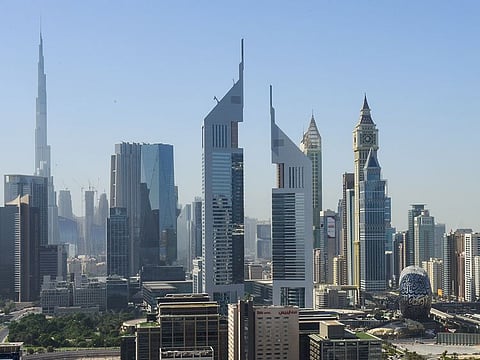GCC to drive foreign capital inflows into the Mena region
The region projected to attract $177 billion external funds in 2021

Dubai: Capital inflows into the Middle East are expected to remain high despite the impact of the pandemic on regional economies, according to the Institute of International Finance (IIF).
“We expect non-resident capital inflows to the region to edge up to $177 billion in 2021, equivalent to 6.6 per cent of GDP,” said Garbis Iradian, Chief Economist, - Middle East and North Africa at IIF.
GCC’s hard currency bond issuance is playing a big role in keeping capital inflows high. While GCC bonds are in big demand among high quality emerging market investors, the rising funding needs are keeping issuance high.
Demand spike
So far this year, hard currency bond issuance by Saudi Arabia, the UAE, Qatar, Bahrain, and Oman has amounted to $91 billion, compared with $99 billion for the whole of 2019. While spreads have narrowed in recent months, they are still wider than pre-COVID-19 levels.
The IIF projects gross public external financing needs of the region at about $100 billion in 2021, driven largely by the Gulf countries. “Strong demand for high-quality assets will remain at least for the next few years given the large financial buffers in the form of official reserves and SWFs (particularly in the UAE, Qatar, Kuwait, and Saudi Arabia) and the resumption of fiscal adjustment,” said Samuel LaRussa, Senior Research Analyst.
Solid returns, dollar-pegged currencies, and large financial buffers in Saudi Arabia, the UAE, Qatar, and Kuwait make debt an attractive alternative to riskier securities in other emerging markets. The underlying technical factors that support credit in these countries – like incremental yield, better credit ratings, and large public foreign assets – still hold up.
Issuance
Overall, GCC’s funding needs in 2021 are projected to remain elevated despite narrower fiscal deficits. However, the debt servicing needs and amortization are will see more external funding through bond issuances
We expect non-resident capital inflows to the region to edge up to $177 billion in 2021, equivalent to 6.6% of GDP

The IIF expects that with oil prices expected to remain below $50/b for the foreseeable future, GCC authorities are implementing serious fiscal adjustment measures to put their finances on a more sustainable footing. “Even so, fiscal and current account deficits are likely to decline only gradually, and the GCC countries may continue to rely on substantial foreign borrowing in the years ahead,” said Iradian.
Lingering deficits
IIF projects capital outflows from the GCC, while declining, will continue to exceed nonresident capital inflows. The plunge in oil prices will shift the aggregated current account for the GCC from a surplus of $98 billion in 2019 to deficits of $24 and $12 billion in 2020 and 2021, respectively. The large resident capital outflows (which increased to $279 billion in 2019), are expected to decline to $176 billion in 2021.
Weak FDI inflows
Foreign direct investment (FDI) in the MENA region remains subdued and largely concentrated in the oil and gas sectors. FDI inflows to the MENA region are expected to remain relatively low, at about 1 per cent of aggregate GDP, in 2021. The UAE and Egypt remain the highest FDI recipient in the region, accounting for more than half of the total.
Sign up for the Daily Briefing
Get the latest news and updates straight to your inbox







